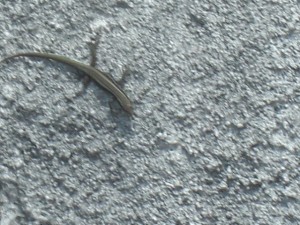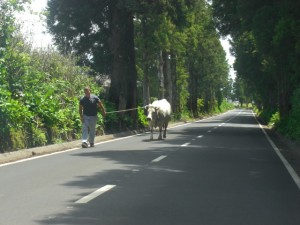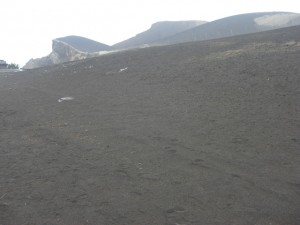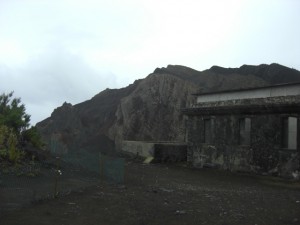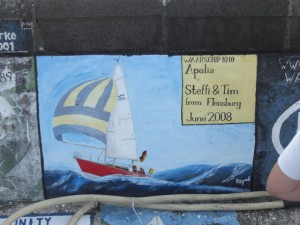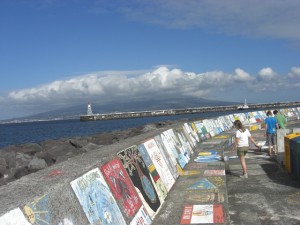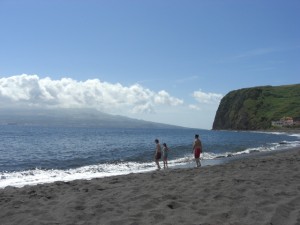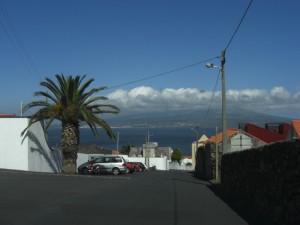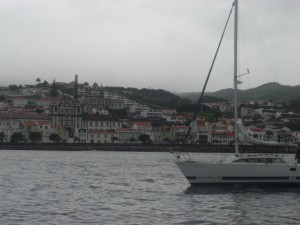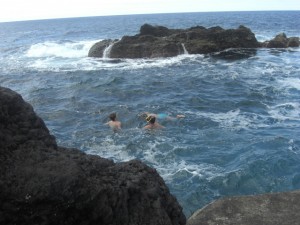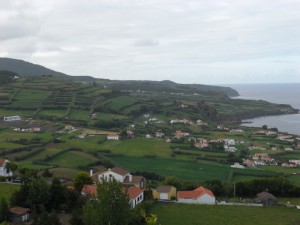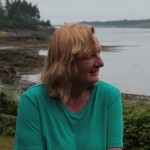The Azores seem to belong to the animal kingdom, whether it’s wildlife or domesticated ones. There are a few cows on each little strip of land, donkeys and sheep can be heard echoing from the mountain side, dogs and cats sleep on the streets, and the birds, 150 species in all, sing all day long.
Some villagers still walk the country roads and wave as one is driving by. The farmer’s wife’s dryer is the ever present wind and so many house fronts are decorated with colorful laundry drying in the breeze. Horses are being groomed, sleepy dogs stared at us and the pace is very slow, in general. This is just what we needed to unwind.
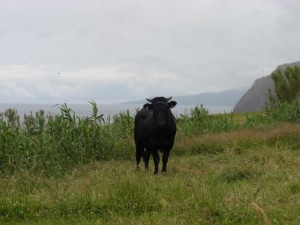
Unfenced land - the cattle is only tied to a rope.
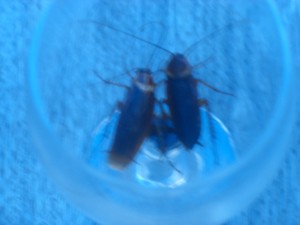
Two cockroaches tasted some wine from Pico!
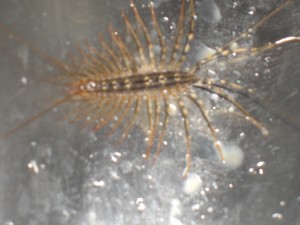
A centipede in the kitchen sink...
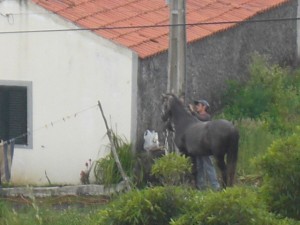
A farmer tending to his horse.
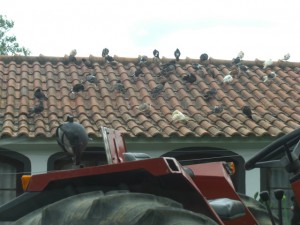
Tractors and pigeons.
We enjoyed the country life on Faial.
